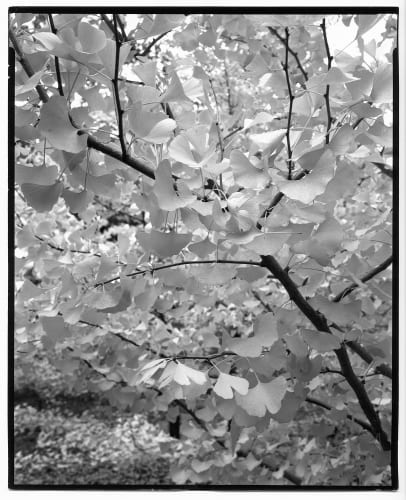Physically, looking through a giant ground glass and seeing how the world looks is amazing. When composing a shot, I see a combination of the real facts of my subject and the camera's transformation of their image at the same time.
Nicholas Nixon (b. 1947, Detroit, Michigan) is an acclaimed American photographer, best known for his large-format black-and-white photography, which captures intimate portraits, landscapes, and urban life. His work is recognized for its raw, unfiltered honesty and technical precision, often focusing on themes of time, aging, human relationships, and the natural world.
Nixon earned his Bachelor of Arts degree from the University of Michigan in 1969 and later pursued a Master of Fine Arts at the University of New Mexico, completing his studies in 1974. Nixon has been exploring portraiture and social photography since the 1970s. He began working with an 8x10 view camera early in his career, a technique he has largely maintained, allowing him to capture extraordinary detail and tonal range in his images. He gained international attention in the 1970s with his Brown Sisters series, an ongoing photographic project in which Nixon has photographed his wife, Bebe, and her three sisters annually since 1975. This work, which captures the passage of time and the evolution of family relationships, has become one of the most iconic series in contemporary photography. Nixon’s approach to portraiture is marked by its profound sensitivity, often conveying a deep sense of intimacy between photographer and subject.
In addition to The Brown Sisters, Nixon is known for his work in urban landscapes, including series like People With AIDS and School. His photographs are characterized by their empathy and attention to the complexities of life, whether documenting the elderly, children, or strangers on the street. Nixon’s body of work extends beyond human subjects, with a keen interest in natural landscapes. His recent focus on trees and the environment, particularly in and around Boston, showcases his ability to capture the quiet majesty of the natural world with the same depth and sensitivity seen in his portraits.
Nixon taught photography for many years, influencing generations of photographers with his commitment to the craft and his thoughtful, methodical approach to image-making. His work has been exhibited widely in major museums and galleries, including the Museum of Modern Art (MoMA) in New York, the San Francisco Museum of Modern Art, and the Museum of Fine Arts, Boston.
Throughout his career, Nixon has received numerous awards, including two Guggenheim Fellowships and three National Endowment for the Arts Fellowships. His photographs are held in the permanent collections of prestigious institutions around the world, affirming his status as one of the most important figures in contemporary photography.
